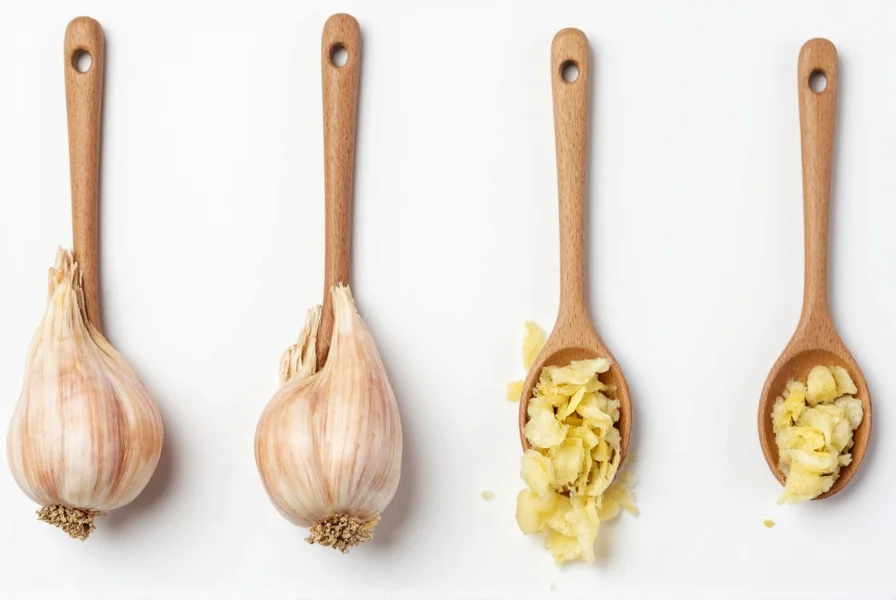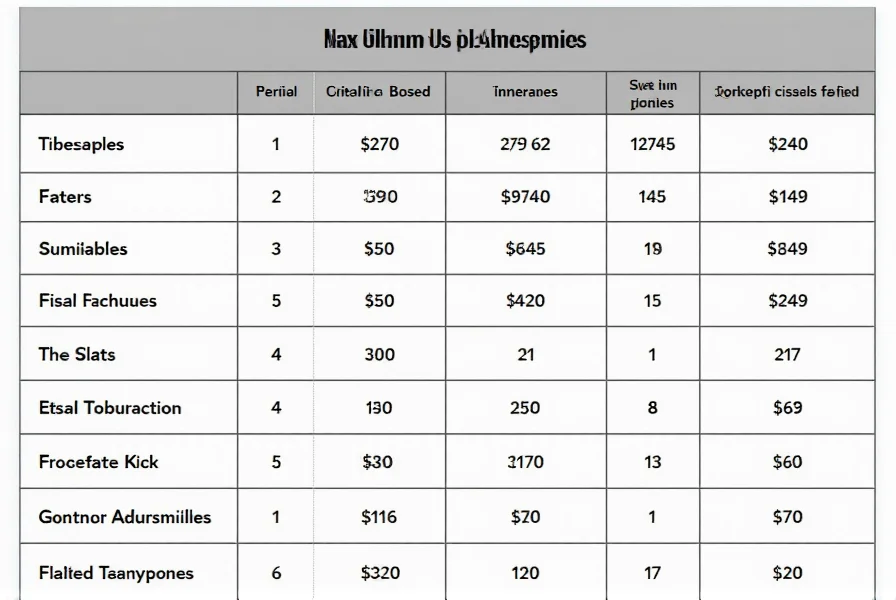Converting garlic cloves to tablespoons is a common kitchen challenge that affects recipe outcomes. Understanding this measurement relationship ensures your dishes achieve the perfect garlic flavor balance without overpowering other ingredients. Let's explore the precise conversions and practical applications for home cooks and professional chefs alike.
Understanding Garlic Measurements
Garlic measurements aren't always straightforward because cloves vary significantly in size. The standard conversion assumes a medium-sized clove, but your actual garlic might differ based on variety and growing conditions. This variation explains why some recipes specify "large" or "small" cloves when precision matters.
Garlic Clove to Tablespoon Conversion Chart
| Garlic Form | 1 Clove | 3 Cloves | 6 Cloves |
|---|---|---|---|
| Minced | 1/2 tsp (1/6 tbsp) | 1 1/2 tsp (1/2 tbsp) | 1 tbsp |
| Chopped | 3/4 tsp (1/4 tbsp) | 2 1/4 tsp (3/4 tbsp) | 1 1/2 tbsp |
| Pressed | 1/4 tsp | 3/4 tsp | 1 1/2 tsp |
Factors Affecting Garlic Measurement Accuracy
Several variables influence the cloves to tablespoons conversion. Garlic size is the most significant factor—commercial garlic often comes in standardized sizes, but farmer's market or homegrown garlic varies considerably. A small clove might yield only 1/4 teaspoon minced (1/12 tablespoon), while an extra-large elephant garlic clove could produce 1 teaspoon (1/3 tablespoon).
Preparation method dramatically changes volume. Minced garlic packs more densely than chopped, while pressed garlic occupies even less space. When converting cloves to tablespoons for your recipes, always note whether the recipe specifies "minced," "chopped," or another preparation style.

Practical Kitchen Applications
When substituting jarred minced garlic for fresh cloves, remember that commercial products often contain preservatives that affect flavor intensity. As a general rule, use 1/2 teaspoon of bottled minced garlic per medium fresh clove. For recipes calling for "garlic, to taste," start with the standard conversion, then adjust after tasting your dish.
Professional chefs recommend measuring minced garlic by volume rather than counting cloves when precision matters. This approach accounts for natural size variations and ensures consistent results. When a recipe specifies "6 cloves," consider whether your garlic heads contain unusually large or small cloves that might require adjustment.
Common Measurement Mistakes to Avoid
Many home cooks make the error of using whole cloves when recipes specify minced. Six whole cloves don't equal six tablespoons—they equal approximately one tablespoon when minced. Another frequent mistake is not accounting for garlic's potency diminishing over time; older garlic often requires slightly larger quantities to achieve the same flavor impact.
When converting older recipes, remember that garlic size has increased over decades due to agricultural improvements. A "medium" clove in a 1950s cookbook might equal today's "small" clove. For vintage recipes, consider using 25% less garlic than the conversion suggests, then adjust to taste.

Advanced Conversion Techniques
For professional results, experienced cooks use the "garlic water displacement" method. Fill a liquid measuring cup with water to the 1-tablespoon mark, add your minced garlic, and note how much the water level rises. This technique accounts for air pockets in chopped garlic that affect standard volume measurements.
When working with roasted garlic, remember that roasting reduces volume by approximately 30%. Six roasted cloves yield about 2 teaspoons (2/3 tablespoon) rather than the 1 tablespoon you'd get from raw garlic. This concentration explains roasted garlic's more intense flavor profile despite the volume reduction.
FAQs About Garlic Measurements
How many tablespoons is 4 garlic cloves?
Four medium garlic cloves equal approximately 2 teaspoons or 2/3 tablespoon of minced garlic. If using chopped garlic, this would be about 1 tablespoon. Remember that actual measurements vary based on clove size—small cloves might yield only 1/2 tablespoon while large ones could produce 1 1/4 tablespoons.
Can I substitute garlic powder for fresh cloves?
Yes, but the conversion differs significantly. Use 1/8 teaspoon garlic powder to replace one medium fresh clove. Garlic powder is more concentrated, so 1 tablespoon of garlic powder equals approximately 24 fresh cloves. Always add garlic powder early in cooking to allow proper flavor development.
Why does my garlic measurement never match the recipe?
Garlic size varies dramatically by variety and growing conditions. What one producer calls "medium" might be "large" to another. Additionally, preparation method affects volume—minced garlic packs more densely than chopped. For consistent results, measure by volume rather than counting cloves, and always taste before final seasoning.
How much jarred minced garlic equals one fresh clove?
Approximately 1/2 teaspoon of commercial jarred minced garlic equals one medium fresh clove. However, check your product's label as concentrations vary. Jarred garlic often contains citric acid or other preservatives that slightly alter flavor intensity, so you may need to adjust by 10-15% for optimal results.
Does roasting garlic change the tablespoon measurement?
Yes, roasting reduces garlic volume by about 30% due to moisture loss. Six roasted cloves yield approximately 2 teaspoons (2/3 tablespoon) of pulp compared to 1 tablespoon from raw cloves. Despite the volume reduction, roasted garlic has more concentrated flavor, so you'll need slightly less than raw garlic for equivalent taste impact.










 浙公网安备
33010002000092号
浙公网安备
33010002000092号 浙B2-20120091-4
浙B2-20120091-4